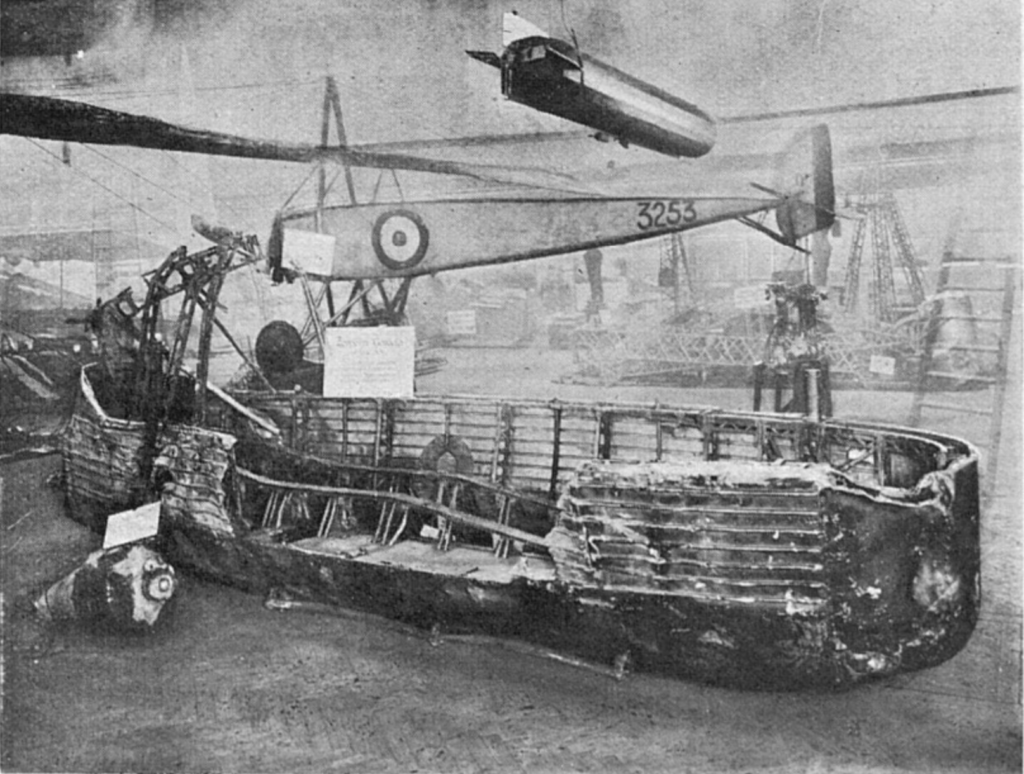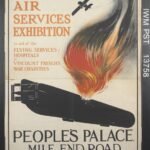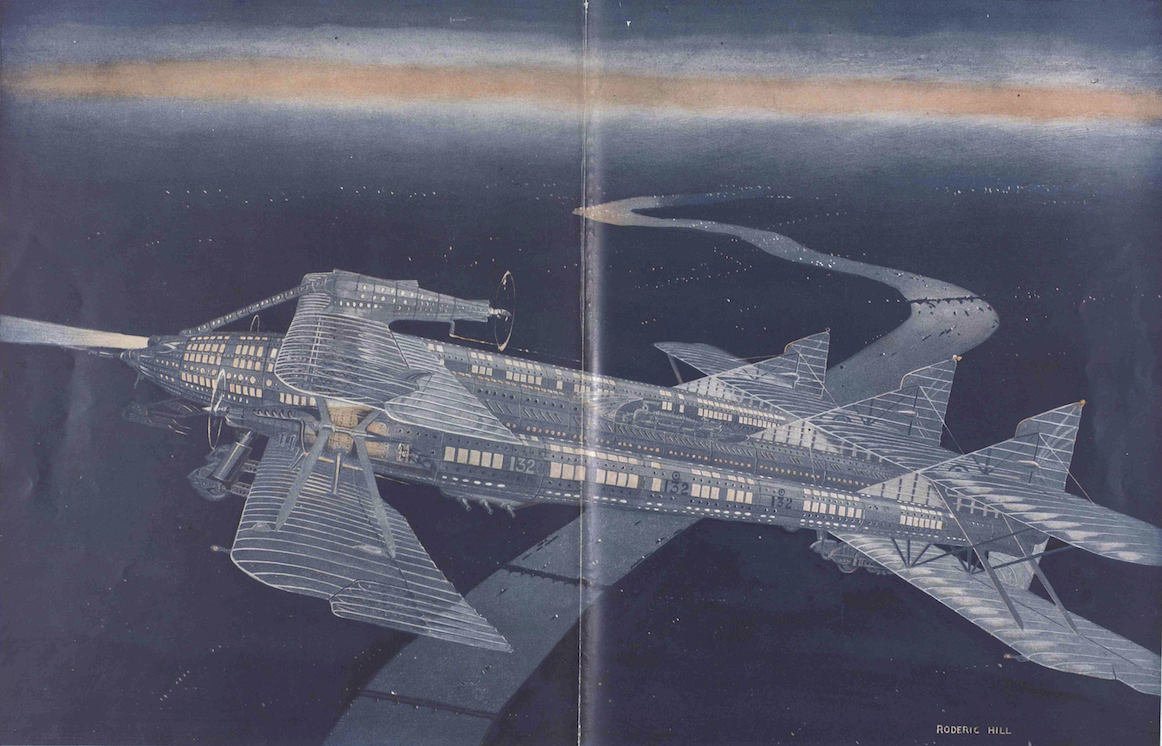
So if I had been able to go back in time and visit the Air Services Exhibition at the People’s Palace on Mile End Road in November 1917, what would I have seen? Well, there are some photos extant. The one above gives a general idea of the exhibition space.

As to the specific exhibitis, the Westminster Gazette gave the fullest list:((Westminster Gazette (London), 31 October 1917, 9.))
- ‘a Sopwith “camel” machine, which is the latest type of English fighting machine… The specimen upon show […] has been very badly “strafed,” and it is of additional interest to add that it was in action within the past ten days’. From the photo above, it doesn’t look very shot up, though. The serial number is B5155, which, judging from airhistory.co.uk, was a Camel F.1 which was only built in September 1917 and never made it to an operational squadron.
- ‘a German two-seater “Albatross“‘ […] This machine is practically new, and was brought down intact by the late Captain Ball, VC’.
- ‘The tail plane, engine bearer, bomb gears, tyres — in fact, all that was left of one of the Gothas which recently raided London’.
- ‘Lieutenant Warneford’s aeroplane’. This is the Morane-Saulnier Type L, serial number 3253, seen in the top photo, which brought down the first Zeppelin destroyed in aerial combat.
- ‘Zeppelin electrical bomb-releasing gear’.
- ‘the observation car from a Zeppelin “picked up in East Anglia”‘ – this must be the one now in the IWM.
- ‘The whole history of aeronautics is covered by the wonderful pictures, cartoons, prints, and photographs which have been arranged in chronological order upon the walls of the main hall’. These were from Lady Drogheda’s own collection.

The Hull Daily Mail added a few more:((Daily Mail (Hull), 31 October 1917, 2.))
- ‘a section of the wrecked Zeppelin [actually a Schütte-Lanz airship, SL11] which we all rushed to see at Cuffley many months ago’. This can be seen in the photos at the top (with placard reading, I think, ‘ZEPPELIN GONDOLA’) and (with Lady Drogheda standing in for scale) just above.
- ‘parachutes used in connection with observation balloons’.
- ‘the German artillery balloon which broke adrift in Berlin and came down in Wales!’ (I must admit to not knowing about this one!)
Even this is not quite exhaustive. A model Zeppelin can be seen suspended from the ceiling in the top photo. A conical object, with placard, is lying (seemingly haphazardly) on the floor in the left foreground, and there also seem to be girders against the walls — presumably ‘pieces of all the different Zeppelins destroyed in this country’.((West Ham and South Essex Mail, 2 November 1917, 1.))
So, not quite the RAF Museum, and unfortunately ‘the’ Gotha promised in the adverisements proves to have been bits of one. But there were some remarkable pieces — if it had survived, Warneford’s Morane-Saulnier would be a star exhibit at any aviation museum today — and anyway, it’s all about the context, isn’t it? So I’ll look at the responses to the Air Services Exhibition in another post.
Image sources: The Sphere (London), 17 November 1917, 137; Daily Mirror (London), 2 November 1917, 5.
![]() This work is licensed under a Creative Commons Attribution-NonCommercial-NoDerivatives 4.0 International License.
Permissions beyond the scope of this license may be available at http://airminded.org/copyright/.
This work is licensed under a Creative Commons Attribution-NonCommercial-NoDerivatives 4.0 International License.
Permissions beyond the scope of this license may be available at http://airminded.org/copyright/.





